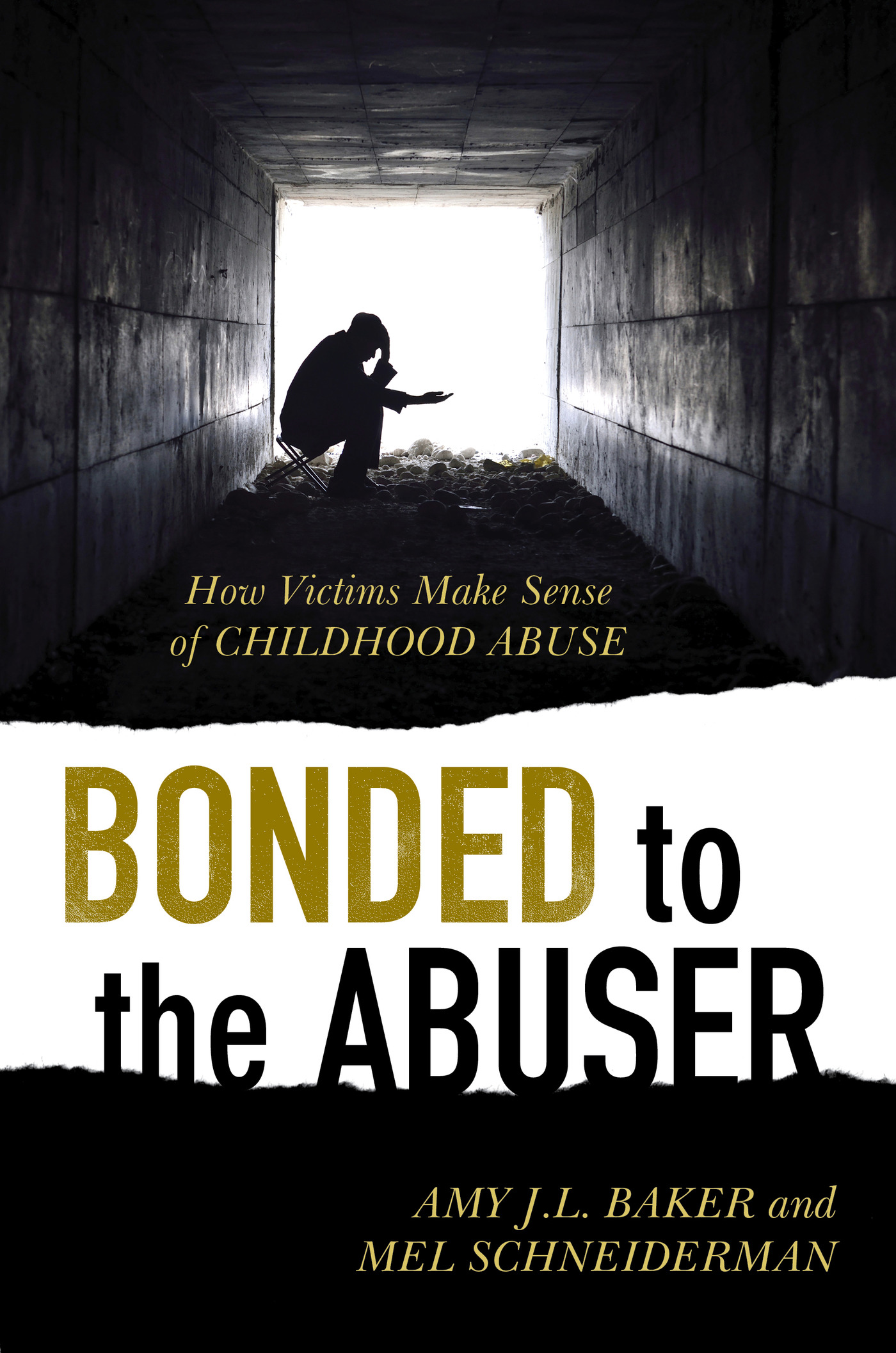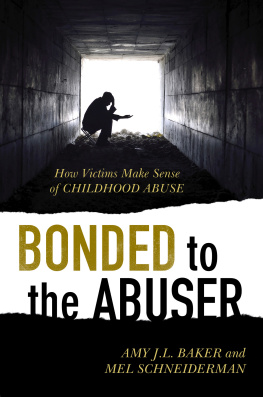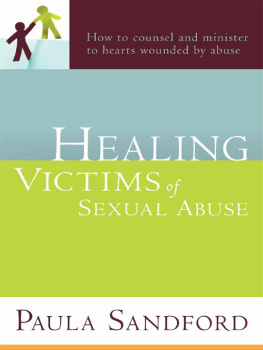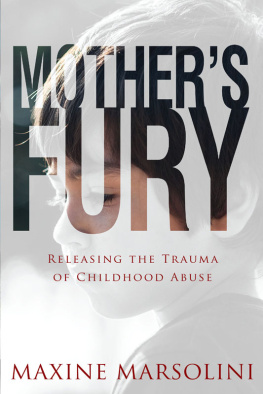Amy J. L. Baker - Bonded to the Abuser: How Victims Make Sense of Childhood Abuse
Here you can read online Amy J. L. Baker - Bonded to the Abuser: How Victims Make Sense of Childhood Abuse full text of the book (entire story) in english for free. Download pdf and epub, get meaning, cover and reviews about this ebook. year: 2012, publisher: Rowman & Littlefield Publishers, genre: Children. Description of the work, (preface) as well as reviews are available. Best literature library LitArk.com created for fans of good reading and offers a wide selection of genres:
Romance novel
Science fiction
Adventure
Detective
Science
History
Home and family
Prose
Art
Politics
Computer
Non-fiction
Religion
Business
Children
Humor
Choose a favorite category and find really read worthwhile books. Enjoy immersion in the world of imagination, feel the emotions of the characters or learn something new for yourself, make an fascinating discovery.
- Book:Bonded to the Abuser: How Victims Make Sense of Childhood Abuse
- Author:
- Publisher:Rowman & Littlefield Publishers
- Genre:
- Year:2012
- Rating:3 / 5
- Favourites:Add to favourites
- Your mark:
- 60
- 1
- 2
- 3
- 4
- 5
Bonded to the Abuser: How Victims Make Sense of Childhood Abuse: summary, description and annotation
We offer to read an annotation, description, summary or preface (depends on what the author of the book "Bonded to the Abuser: How Victims Make Sense of Childhood Abuse" wrote himself). If you haven't found the necessary information about the book — write in the comments, we will try to find it.
Bonded to the Abuser: How Victims Make Sense of Childhood Abuse — read online for free the complete book (whole text) full work
Below is the text of the book, divided by pages. System saving the place of the last page read, allows you to conveniently read the book "Bonded to the Abuser: How Victims Make Sense of Childhood Abuse" online for free, without having to search again every time where you left off. Put a bookmark, and you can go to the page where you finished reading at any time.
Font size:
Interval:
Bookmark:
Bonded to the Abuser
Bonded to the Abuser
How Victims Make Sense of
Childhood Abuse
Amy J. L. Baker and Mel Schneiderman
ROWMAN & LITTLEFIELD
Lanham Boulder New York London
Published by Rowman & Littlefield
A wholly owned subsidiary of The Rowman & Littlefield Publishing Group, Inc.
4501 Forbes Boulevard, Suite 200, Lanham, Maryland 20706
www.rowman.com
Unit A, Whitacre Mews, 26-34 Stannary Street, London SE11 4AB
Copyright 2015 by Amy J. L. Baker
All rights reserved. No part of this book may be reproduced in any form or by any electronic or mechanical means, including information storage and retrieval systems, without written permission from the publisher, except by a reviewer who may quote passages in a review.
British Library Cataloguing in Publication Information Available
Library of Congress Cataloging-in-Publication Data
Baker, Amy J. L.
Bonded to the abuser : how victims make sense of childhood abuse / Amy J. L. Baker and Mel Schneiderman.
pages cm.
Includes bibliographical references and index.
ISBN 978-1-4422-3690-5 (cloth : alk. paper) -- ISBN 978-1-4422-3688-2 (electronic)
1. Adult child abuse victims--Case studies. 2. Adult child abuse victims--Rehabilitation. I. Schneiderman, Mel. II. Title.
RC569.5.C55B25 2015
362.76--dc23
2014042698
 TM The paper used in this publication meets the minimum requirements of American National Standard for Information Sciences Permanence of Paper for Printed Library Materials, ANSI/NISO Z39.48-1992.
TM The paper used in this publication meets the minimum requirements of American National Standard for Information Sciences Permanence of Paper for Printed Library Materials, ANSI/NISO Z39.48-1992.
Printed in the United States of America
We dedicate this book to the authors of the memoirs for their courage and grace in putting into such beautiful words the pain and sorrow of childhood abuse and neglect. We also dedicate the book to victims of childhood maltreatment everywheremay they each write their own story in their own way.

We gratefully acknowledge our appreciation for the team at Rowman & Littlefield for overseeing this project and providing helpful feedback along the way. We also acknowledge the very able assistance of our interns Courtney Dimick, Rachel Middleton, and Deidra OLoughlin.
Stories make us more alive, more human, more courageous, more loving.
Madeleine LEngle
This is a book about child abuse and neglect. It is also a book about stories and the power of storiesespecially memoirs of childhood maltreatmentto help both the author and the reader to understand and heal from the trauma of maltreatment.
According to the Federal Child Abuse Prevention and Treatment Act, child abuse and neglect are defined as any recent act or failure to act on the part of a parent or caretaker which results in death, serious physical or emotional harm, sexual abuse or exploitation; or an act or failure to act which presents an imminent risk of serious harm.
Not only is childhood maltreatment widespread, but it is also associated with serious long-term consequences for the childs emotional and physical well-being, and by extension, for society as well. Child maltreatment, for example, is considered one of the ten primary adverse childhood experiences (ACE) studied longitudinally. The ACE study, a joint project of the Centers for Disease Control and Prevention and Kaiser Permanente in San Diego, is the largest ongoing examination of the association between childhood maltreatment and adult health and well-being, with data collected from more than seventeen thousand participants. Findings demonstrate that certain early childhood experiences (such as maltreatment) function as risk factors for a variety of medical illnesses and poor health later in life. ACE researchers have found that the greater number of adverse childhood events, the greater the likelihood of physical and emotional impairment in the individual. For example, those with four of the ten adverse childhood experiences were twelve times more likely to attempt suicide than individuals with no ACEs.
The ACE studies do not identify the impact of specific types of maltreatment, which reflects a trend in the field away from abuse-specific conceptualizations to an understanding that all types of child maltreatment may represent a trauma for the child. The concept of traumaoriginally defined as a wound, injury, or shock to the psychological integrity of an individual, in recognition of the unique impact of trauma experienced early in life. Developmental trauma, however, is not a diagnosis recognized by the American Psychiatric Association in its Diagnostic and Statistical Manual, despite being advocated for by some trauma specialists in the field.
The trauma-informed perspective emerged in recognition of the fact that many children experience more than one type of maltreatment and that there is not necessarily a one-to-one correspondence between the type of maltreatment and negative outcome. Accordingly, all victims of childhood maltreatment are likely to be impacted in various domains of functioning such as cognition (distorted ideas about the value of the self and the safety of the world), emotion regulation (hyperarousal and/or numbing), physical health (stress level, illness), and social relationships (social withdrawal and/or aggression). What appears to matter in terms of impact of maltreatment on a child is how the child perceives and constructs meaning of the maltreatment experience.
The purpose of this book is to examine that meaning-making process, to hear the voices of adult survivors of different types of maltreatment experiences so that adult survivors, their friends and family, as well as mental health professionals and the lay public can have a firsthand perspective in a way that might not otherwise be possible. We want to honor the voices and the stories of adult victims of childhood maltreatment in order to deepen the readers empathy for and understanding of the experience. Because people still think of themselves as being victims of one type of maltreatment or another (i.e., I am a survivor of sexual abuse), we chose to organize the stories we read and analyzed into broad categories based on the primary type of maltreatment experienced. Thus, we were able to explore the themes and issues that appear to accompany different types of maltreatment.
Five types of maltreatment are the focus of this book: physical abuse, sexual abuse, emotional abuse, emotional neglect, and physical neglect. All available memoirs written and published by adults about their firsthand experiences with at least one of these forms of childhood maltreatment by a parent were read and reviewed (although admittedly we may have missed some). For each of the five types we begin with a set of three in-depth narratives, which is followed by an analysis of the major themes that arose from all of the narratives read about that specific type of maltreatment. For example, nine narratives about physical abuse were read, three of which are summarized in chapter 1, all of which are analyzed in chapter 2. Likewise, six narratives about sexual abuse were read, three of which are summarized in chapter 3, all of which are reviewed in chapter 4.
The most common themes are discussed in each chapter, although others were present as well. The themes presented in each chapter are for the most part documented in the academic and clinical literature but are described here from the victims point of view, thus adding a new dimension to the knowledge base. It is important to bear in mind that the memoirs were written by abuse survivors when they were adults. Therefore, it is not always possible to determine at what point in the life of the victim certain experiences first occurred, as the stories are told with the benefit of both psychological distance and hindsight.
Next pageFont size:
Interval:
Bookmark:
Similar books «Bonded to the Abuser: How Victims Make Sense of Childhood Abuse»
Look at similar books to Bonded to the Abuser: How Victims Make Sense of Childhood Abuse. We have selected literature similar in name and meaning in the hope of providing readers with more options to find new, interesting, not yet read works.
Discussion, reviews of the book Bonded to the Abuser: How Victims Make Sense of Childhood Abuse and just readers' own opinions. Leave your comments, write what you think about the work, its meaning or the main characters. Specify what exactly you liked and what you didn't like, and why you think so.





![Heitritter Lynn - Helping victims of sexual abuse: [a sensitive biblical guide for counselors, victims, and families]](/uploads/posts/book/212530/thumbs/heitritter-lynn-helping-victims-of-sexual-abuse.jpg)
